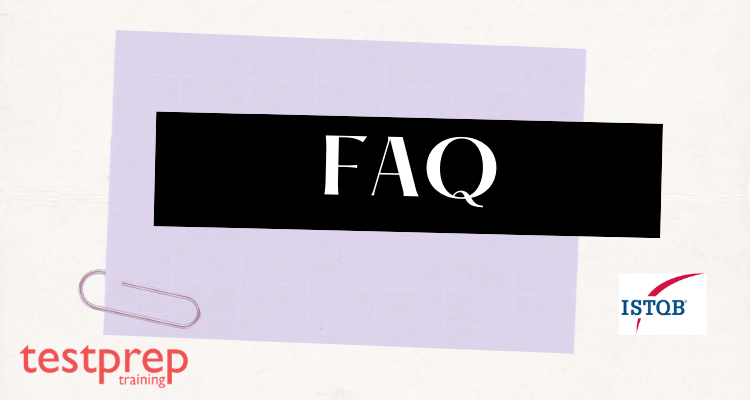ISTQB-ATA-Advanced level Test Analyst FAQ

What is ISTQB-ATA-Advanced level Test Analyst examination ?
The ISTQB-ATA-Advanced level Test Analyst examination is designed to analyze and summarize the appropriate tasks for the Test Analyst. It will help you in developing skills required in risk identification, perform risk assessment, and propose appropriate risk mitigation. This certification will defiantly help you grow in your analyst career.
How to register for the examination ?
For registering yourself for the examination, follow the following steps:
- Go on the official website of the ISTQB-ATA-Advanced level Test Analyst.
- Click on the register now an option
- You will be redirected to a registration page. Click on the option and follow the prompt.
- Make the payment and complete the registration.
What is the cost of examination ?
The cost of the examination is $229
What is the rescheduling fee of the examination ?
The rescheduling fee of the examination is $90.
What are the course content of the examination ?
- The Test Analyst’s Tasks in the Test Process
- The Test Analyst’s Tasks in Risk-Based Testing
- Test Techniques
- Testing Software Quality Characteristics
- Reviews
- Test Tools and Automation
What is the passing score in order to get the certification
You must attain a passing score of 65% or above to achieve your certification
What is the total marks of the exam ?
The exam will be for a total of 40 points. You will be required to score atleast 65% to pass the exam.
What is the duration of examination ?
You are given 90 minutes to complete the examination
What are exam prerequisites ?
The Certified Tester Foundation Level certificate shall be obtained before taking the Advanced Level Test Analyst certification exam.
What skills will be acquired after completing the certification ?
After completion of this examination you will develop and acquire the following skills:
- perform the appropriate testing activities based on the software development lifecycle being used;
- determine the proper prioritization of the testing activities based on the information provided by the risk analysis;
- select and apply appropriate test techniques to ensure that tests provide an adequate level of confidence, based on defined coverage criteria;
- provide the appropriate level of documentation relevant to their testing activities;
- determine the appropriate types of functional testing to be performed;
- work effectively in a usability testing team;
- effectively participate in requirements/user story reviews with stakeholders, applying knowledge of typical mistakes made in work products;
- improve the efficiency of the test process with the use of tools.

